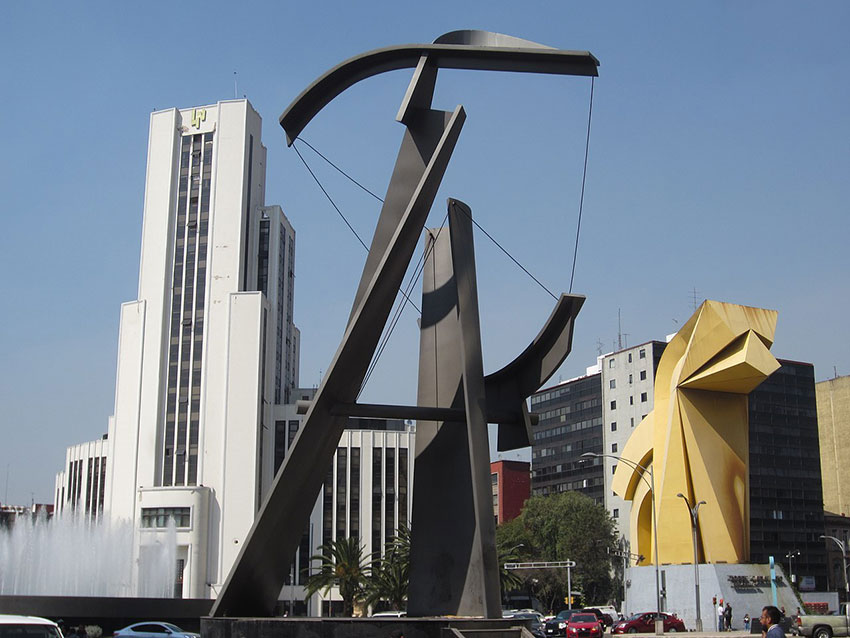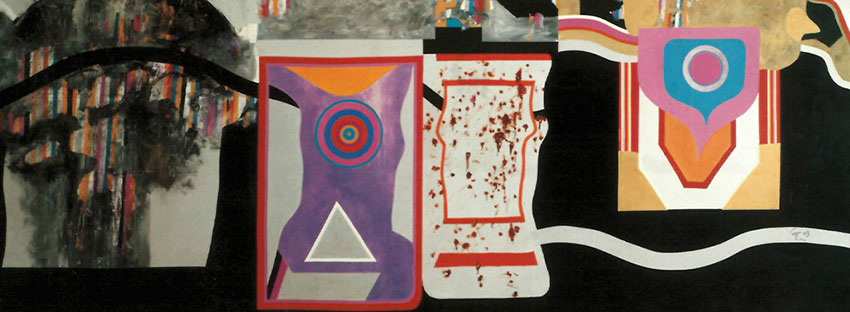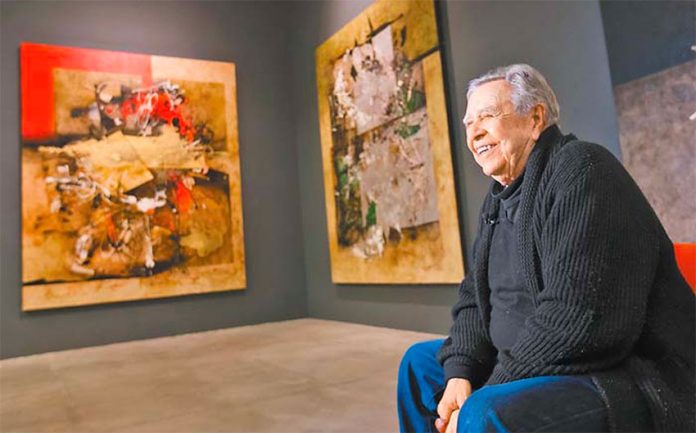A rebellious abstract artist who broke with the work of the muralists to open up a world of possibilities for Mexican artists died at his home in Zacatecas this week.
Painter, sculptor and highly prominent contrarian artist Manuel Felguérez was 91.
Most people’s conception of Mexican art begins and ends with Diego Rivera and Frida Kahlo. They are not aware of Mexico’s artistic development since then, despite a generations-long struggle to move beyond folk scenes and overt political messages.
One significant reason is that the Mexican government, especially its tourism authorities, still promote the art of the 1920s and 1930s as definitive.
Manuel Felguérez was born in 1928 in Valparaiso, Zacatecas. His generation in this state was caught up in the reforms of the post-Revolution and the Cristero War, a backlash against the anti-Catholic policies of the federal government. The Felguérez family were forced to relinquish their lands and flee for their lives in 1935, ironically to the seat of that same government in Mexico City.

Felguérez would not return to Zacatecas until six decades later, when a museum there opened in his honor in 1998.
His family’s poverty made him a rebellious, at-risk youth. Talent got Felguérez a space in Mexico’s prestigious Academy of San Carlos art school, but he lasted only a few months because he would not conform to the principles of the dominant muralism movement, those of Diego Rivera, José Clemente Orozco and David Alfaro Siqueiros.
Instead, he found a way in 1947 to get himself to post-war Europe, while its cultural scene was recovering. There, he studied at the Grande Chaumière Academy in Paris under French-Russian cubist artist Ossip Zadkine.
That time in Europe would inform his work until his death, promoting more modern movements such as geometic-constructivism, informalism, and abstract expressionism, even when such work was shunned by Mexican cultural authorities.
Fortunately, there was a nascent private gallery system forming in the mid-20th century in Mexico which allowed him to survive until the 1960s and 1970s when attitudes shifted.
When abstract and other expressions finally did take hold, Felguérez’s work in painting, sculpture and other media were in the vanguard and able to get government funding. One of the most important projects of this type was the Osaka Murals, a series of works for World’s Fair in Osaka, Japan, in 1970.

He also continued to look abroad for inspiration, a trait that separates Mexico’s “Breakaway Generation” (Generación de la Ruptura) from its more famous predecessor. This paved the way for generations of artists thereafter to develop Mexican art as part of a global phenomenon, rather than as a nationalistic one.
Felguérez constantly experimented with new materials, forms, and techniques and ideas, such as making sets for the Theatre of the Absurd in the 1950s and 1960s. Despite his age, he worked with digital art in the 1970s, using one of only three computers at the Iberoamericana University in Mexico City.
Felguérez’s family never recovered the lands they lost, nor were they compensated for them. However, that loss allowed the maestro to develop his life on a completely different path. His work received national and international recognition including the National Arts Prize from the federal government and a Guggenheim fellowship to Harvard as a visiting researcher.
Felguérez went from an exile, fleeing for his life, to one of Zacatecas’ officially proclaimed “illustrious citizens.” The Manuel Felguérez Abstract Art Museum is located in the historic center of the city of Zacatecas and is dedicated specifically to abstract art of his generation and those that follow.
Manuel Felguérez died at his home on June 8 at 91, a few years short of his 100th birthday, which he had intended to celebrate with an exhibition at New York’s Museum of Modern Art.
Although a diagnosis has not been confirmed, he had exhibited symptoms of Covid-19.
Leigh Thelmadatter arrived in Mexico 17 years ago and fell in love with the land and the culture. She publishes a blog called Creative Hands of Mexicoand her first book, Mexican Cartonería: Paper, Paste and Fiesta, was published last year. Her culture blog appears weekly on Mexico News Daily.
